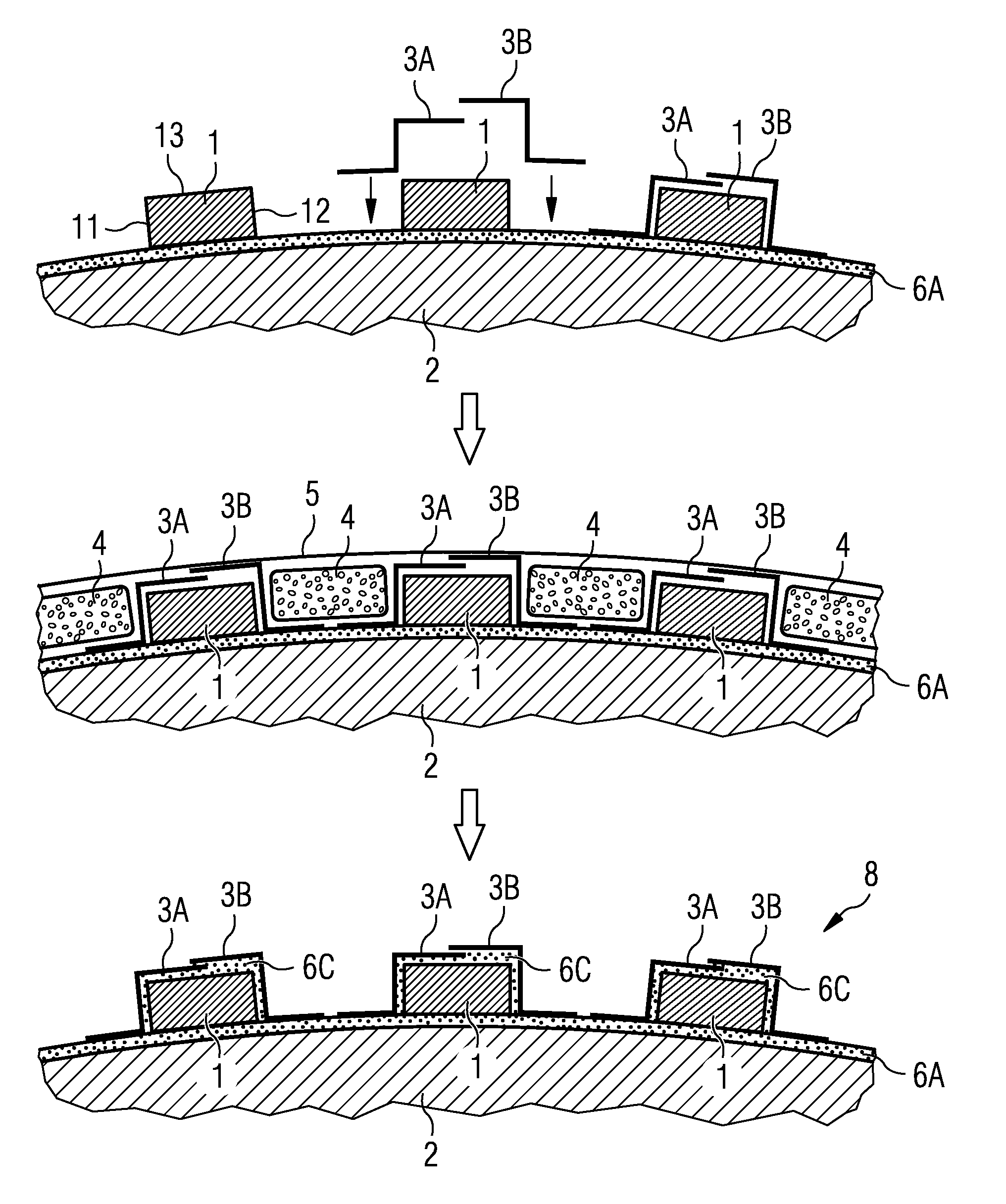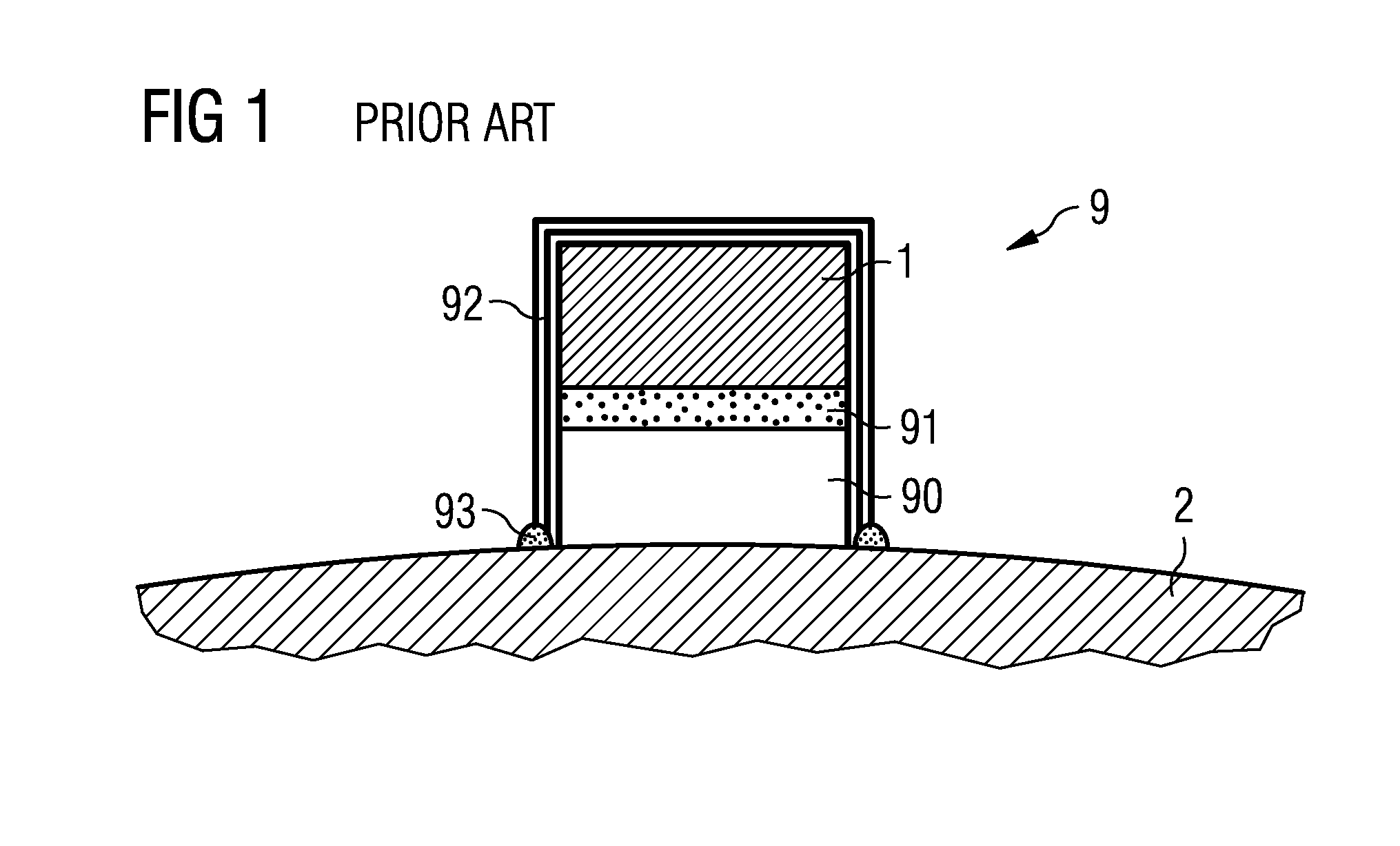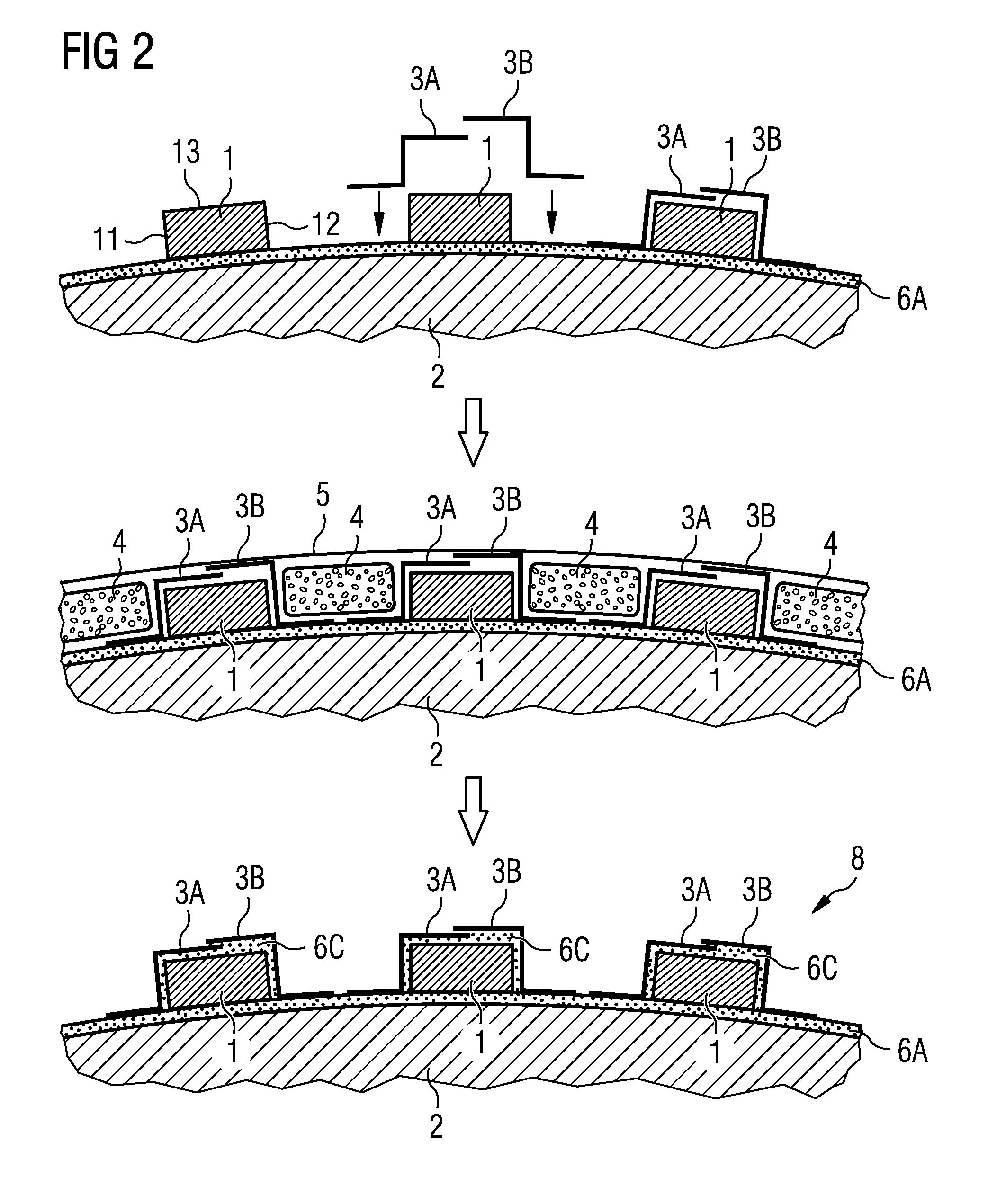Method of attaching a magnet to a rotor or a stator of an electrical machine
a technology of electrical machines and magnets, which is applied in the direction of dynamo-electric machines, wind energy generation, magnetic circuit shapes/forms/construction, etc., can solve the problems of inflexible and expensive approach, insufficient protection against corrosion or mechanical impact, and additional weight contribution of steel bars, etc., to achieve the effect of not leaving too much leeway
- Summary
- Abstract
- Description
- Claims
- Application Information
AI Technical Summary
Benefits of technology
Problems solved by technology
Method used
Image
Examples
Embodiment Construction
[0033]FIG. 1 shows a prior art magnet mounting arrangement 9 for a magnet 1 and a rotor 2. Many such magnets 1 may be attached to the rotor 2, but only one is shown here for the sake of clarity. The magnet 1 is shown in cross-section, and it will be understood that, for a rotor 2 with a diameter in the region of 2-6 m, such a magnet 1 can typically have a cross-sectional area in the region of 10-60 cm2. In this prior art approach, the magnet 1 is first glued to a steel base 90 by means of an adhesive layer 91. The combined base and magnet unit is then covered by a fitted steel housing 92, which in turn is soldered along its outer edges to the rotor 2.
[0034]FIG. 2 illustrates steps of the inventive method of mounting a magnet 1 to a rotor 2. In a first stage, as shown in the top of the diagram, an adhesive layer 6A is applied to the surface of the rotor 2, and the magnets 1 are positioned as appropriate. Then, a pair of retainers 3A, 3B are put into place, one on each side of the mag...
PUM
| Property | Measurement | Unit |
|---|---|---|
| height | aaaaa | aaaaa |
| height | aaaaa | aaaaa |
| diameter | aaaaa | aaaaa |
Abstract
Description
Claims
Application Information
 Login to View More
Login to View More - R&D
- Intellectual Property
- Life Sciences
- Materials
- Tech Scout
- Unparalleled Data Quality
- Higher Quality Content
- 60% Fewer Hallucinations
Browse by: Latest US Patents, China's latest patents, Technical Efficacy Thesaurus, Application Domain, Technology Topic, Popular Technical Reports.
© 2025 PatSnap. All rights reserved.Legal|Privacy policy|Modern Slavery Act Transparency Statement|Sitemap|About US| Contact US: help@patsnap.com



